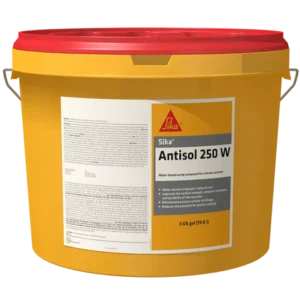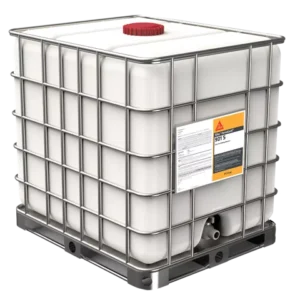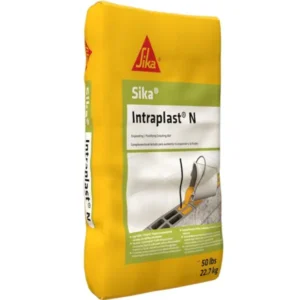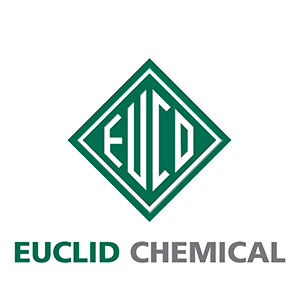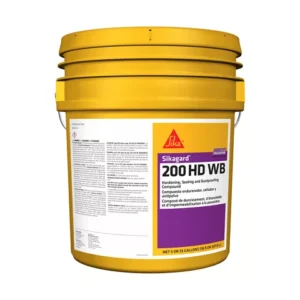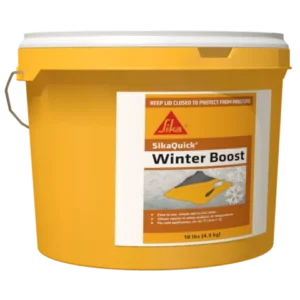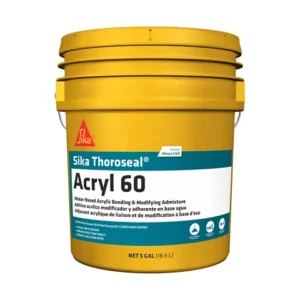Grouting Aid
Grouting aids enhance the performance and workability of cementitious grouts and mortars in challenging conditions. These specialized additives work as expansion agents for non-shrink applications. They function as water-reducing admixtures that improve strength and flow. Hot and cold weather formulations maintain optimal curing in extreme temperatures. Curing compounds ensure proper hydration and strength development. Our professional-grade grouting aids help you grout machinery base plates and secure anchor bolts effectively. They protect concrete surfaces from common problems. These products control expansion, extend working times, and prevent shrinkage cracks. They stop moisture loss and deliver consistent, reliable results on every project.
Showing all 13 results
Showing all 13 results
Understanding Grouting Aids and Their Applications
Grouting aids are essential chemical admixtures and compounds designed to modify the properties of Portland cement-based grouts, mortars, and concrete during mixing, placement, and curing phases. These specialized additives address common challenges in construction and repair applications by enhancing workability, controlling volume changes, adjusting setting times, and improving the final strength and durability of cementitious materials. Construction professionals rely on grouting aids to achieve consistent results in demanding conditions where standard cement-water mixtures alone cannot meet performance requirements.
The science behind grouting aids involves complex chemical reactions that interact with cement hydration processes. When Portland cement contacts water, it begins forming calcium silicate hydrate crystals that provide strength and binding properties. Grouting aids modify this process through various mechanisms, including altering the surface tension of mixing water, controlling the formation of hydration products, or introducing expanding agents that compensate for natural shrinkage. Understanding these mechanisms helps contractors and engineers select the appropriate grouting aid for specific applications and environmental conditions.
Types of Grouting Aids and Their Functions
Expansion and Shrinkage Compensating Agents
Non-shrink grouting aids contain carefully formulated expanding agents that produce controlled gaseous or crystalline expansion before the grout reaches initial set. This expansion mechanism compensates for the natural volume reduction that occurs during cement hydration, ensuring complete contact between the grout and surrounding surfaces. These additives are critical for precision grouting applications where load transfer and bearing capacity depend on full contact, such as equipment base plates, column base connections, and precast concrete joints.
The expansion process typically occurs through one of two mechanisms: gas-generating systems that produce controlled gas bubbles, or ettringite-forming systems that create expansive crystals during early hydration. Gas-generating systems provide rapid early expansion ideal for flowable grouts, while ettringite systems offer more gradual, sustained expansion suitable for thicker placements. Modern formulations often combine both mechanisms to achieve optimal expansion characteristics across a range of placement conditions and grout consistencies.
Water-Reducing and Fluidifying Admixtures
High-range water reducers and superplasticizers improve grout flowability without increasing water content, which would otherwise compromise strength and increase shrinkage. These grouting aids enable the production of fluid, self-leveling grouts that can penetrate narrow spaces and completely fill complex voids while maintaining high compressive and bond strength. Plasticizing agents also reduce bleeding and segregation, ensuring uniform consistency throughout the placed material.
The molecular structure of these admixtures allows them to disperse cement particles more effectively, breaking up agglomerations and releasing trapped water for improved workability. Modern polycarboxylate-based formulations offer superior performance at lower dosage rates compared to traditional products. These advanced water reducers maintain flowability for extended periods while still allowing normal strength development once the grout begins to set.
Temperature-Specific Additives for Seasonal Conditions
Cold weather accelerators increase the rate of cement hydration, allowing concrete and grout to achieve early strength development when temperatures drop below 50°F. These additives prevent freezing damage and reduce protection time required during winter construction. Common accelerating agents include both chloride and non-chloride formulations, with non-chloride alternatives required for use with embedded steel reinforcement. The acceleration mechanism involves increasing the solubility of cement compounds and promoting faster crystal growth, enabling grouts to reach critical strength before freezing can cause damage.
Conversely, hot weather retarders and extenders slow the setting process, providing additional working time when high temperatures would otherwise cause premature stiffening and reduce placement quality. These additives work by temporarily modifying the hydration process, delaying the onset of setting reactions. Summer grouting aids become essential when ambient temperatures exceed 85°F, as rapid moisture loss and accelerated setting can lead to cold joints, poor consolidation, and reduced ultimate strength if not properly controlled.
Curing Compounds and Moisture Retention Aids
Proper curing is essential for achieving design strength and durability in cementitious materials. Curing compounds form a temporary membrane on concrete surfaces that prevents premature moisture loss during the critical early hydration period. These products include water-based acrylic solutions, wax-based emulsions, and resin-based formulations that seal the surface while allowing the concrete to cure properly. The membrane typically degrades over time through UV exposure and weathering, eliminating the need for removal before applying subsequent treatments or coatings.
Advanced curing compound formulations may incorporate additional features such as light-reflective pigments to reduce heat absorption in hot climates, or penetrating components that densify the concrete surface while curing. Some products combine curing and sealing functions, providing both immediate moisture retention and long-term surface protection. The selection of curing compound type depends on factors including subsequent surface treatments, exposure conditions, and aesthetic requirements.
Corrosion Inhibiting Admixtures
Corrosion protection additives help protect embedded steel reinforcement by reducing the risk of rust formation and concrete deterioration. These grouting aids are particularly important in structures exposed to chlorides from deicing salts or marine environments, extending service life and reducing maintenance requirements. Corrosion inhibitors work through various mechanisms, including forming protective barriers, reducing chloride permeability, or modifying the concrete environment to prevent corrosion initiation.
Some corrosion inhibitors can penetrate existing concrete to reach and protect embedded reinforcement. These products can be incorporated into repair grouts or applied as surface treatments, providing protection in structures where chloride exposure is a concern. The effectiveness of corrosion inhibitors is typically evaluated through standardized testing methods that demonstrate reduced corrosion rates compared to untreated controls.
Application Methods and Best Practices
Grouting aids require careful attention to mixing procedures, dosage rates, and application timing to achieve optimal performance. Powder additives are often introduced at the job site to ensure maximum effectiveness, while liquid admixtures may be batched at the plant or added during mixing. The sequence of material addition can significantly impact the effectiveness of grouting aids – for example, some water reducers perform best when added after initial cement wetting, while expansion agents typically require simultaneous mixing with dry cement.
Proper mixing equipment ensures complete dispersion of grouting aids throughout the mix. Mixing duration must be sufficient to activate the admixture without introducing excessive air or generating heat that could accelerate setting. Temperature conditioning of materials and mixing water may be necessary in extreme weather conditions to maintain proper reaction rates and working times.
Quality control during placement includes monitoring flow characteristics, working time, and temperature rise to ensure the grouting aid is performing as expected. Field testing methods such as flow cone measurements, expansion testing, and cube strength testing verify that performance requirements are being met. Documentation of ambient conditions, material temperatures, and mixing procedures provides valuable data for troubleshooting and quality assurance.
Common Applications and Industry-Specific Requirements
Precision Equipment and Machinery Grouting
Machine base grouting requires non-shrink properties to maintain alignment and prevent vibration issues. Grouting aids ensure complete support under base plates, preventing voids that could lead to equipment failure or reduced operational efficiency. Critical equipment installations often require grouts with excellent vibration resistance and long-term stability. The grouting aid must provide sufficient working time for accurate placement and leveling while still achieving rapid strength gain to minimize equipment downtime.
Infrastructure and Heavy Civil Construction
Bridge bearing pads, expansion joint headers, and post-tensioning anchor zones require specialized grouting aids that provide high early strength, controlled expansion, and excellent durability. These applications often involve large volume placements where heat of hydration must be controlled to prevent thermal cracking. Extended workability becomes critical for tremie placement or pumping over long distances, requiring sophisticated admixture systems that maintain consistency without segregation.
Precast and Modular Construction
Connection grouting in precast structures demands rapid strength development to maintain construction schedules while ensuring structural continuity. Grouting aids for sleeve connections and shear keys must provide excellent flow properties to completely fill confined spaces without bleeding or shrinkage. Cold weather construction of precast structures particularly benefits from accelerating admixtures that allow earlier form stripping and handling without compromising ultimate strength.
Rehabilitation and Repair Applications
Structural repair grouts require careful selection of grouting aids to ensure compatibility with existing concrete and achieve adequate bond strength. Shrinkage-compensating agents become especially critical in thin overlay applications where differential shrinkage could cause delamination. Corrosion-inhibiting admixtures provide additional protection in repair scenarios where chloride contamination may already be present in the existing structure.
Performance Standards and Testing Requirements
Professional-grade grouting aids are formulated to meet industry standards including ASTM C1107 for non-shrink grout, ACI 305 and 306 guidelines for hot and cold weather concreting, and project-specific performance criteria. Standardized test methods evaluate critical properties including flow consistency, expansion characteristics, setting time, and compressive strength development. These tests ensure consistent performance across different batches and verify compliance with specification requirements.
Long-term durability testing may include freeze-thaw resistance, sulfate exposure, alkali-silica reaction potential, and chloride permeability evaluation. Performance-based specifications increasingly focus on service life prediction, requiring grouting aids that contribute to enhanced durability rather than just meeting minimum strength requirements. Life cycle cost analysis often justifies the use of premium grouting aids by demonstrating reduced maintenance requirements and extended service life.
Environmental Considerations and Sustainable Practices
Modern grouting aids are increasingly formulated with environmental compatibility in mind, including low-VOC formulations for interior applications and products that comply with LEED requirements. Bio-based admixtures derived from renewable resources offer alternatives to petroleum-based products while maintaining performance characteristics. Waste reduction through improved placement efficiency and reduced rejection rates contributes to sustainable construction practices.
The use of grouting aids can enhance sustainability by enabling reduced cement content while maintaining performance, extending structure service life, and minimizing repair requirements. Some admixtures facilitate the use of supplementary cementitious materials like fly ash or slag, further reducing the carbon footprint of concrete construction. Proper dosing and application of grouting aids prevents material waste and reduces the environmental impact of construction activities.
Storage, Handling, and Safety Considerations
Proper storage of grouting aids is essential for maintaining effectiveness. Powder products must be protected from moisture and stored in dry conditions, while liquid admixtures require protection from freezing and extreme temperatures. Shelf life varies significantly by product type and storage conditions. Stock rotation and inventory management ensure materials are used within their effective life span.
Safety considerations include proper personal protective equipment when handling concentrated admixtures, adequate ventilation in confined spaces, and compliance with safety data sheet requirements. Some grouting aids may cause skin or eye irritation, requiring appropriate protective measures during mixing and application. Emergency response procedures should address potential spills or exposure incidents, with appropriate cleanup materials and first aid supplies readily available.
Future Developments and Innovation
The grouting aid industry continues to evolve with advances in polymer chemistry, nanotechnology, and sustainable materials. Self-healing grouts incorporating microencapsulated healing agents represent an emerging technology that could dramatically extend service life in critical applications. Smart admixtures that respond to environmental conditions or loading patterns offer potential for adaptive performance in changing conditions.
Digital integration through sensor technology and real-time monitoring enables optimization of grouting aid dosage and performance verification during placement. As performance requirements become more stringent and sustainability concerns drive innovation, grouting aids will continue to play an essential role in advancing construction technology and improving infrastructure durability.
